-
TrackoBit
Manage commercial vehicles with the new-age Fleet Management Software
TrackoBit -
TrackoField
Streamline your scattered workforce with Field Force Management Software
TrackoField -
Features Resources
-
Blog
Carefully curated articles to update you on industrial trends. -
White Paper
Insightful papers and analysis on essential subject matters. -
Glossary
Explore an alphabetical list of relevant industry terms. -
What’s New
Get TrackoBit & TrackoField monthly updates here. -
Case Study
Explore the cases we solved with our diverse solutions. -
Comparisons
Compare platforms, features, and pricing to find your best fit.
-
About Us
Get to know TrackoBit: our team, ethos, values, and vision. -
Careers
Join the most dynamic cult of coders, creatives and changemakers. -
Tech Support
Learn about our technical support team and services in detail. -
Events
Check out the exhibitions where we left our marks and conquered. -
Contact Us
Connect with us and let us know how we can be of service.
Ship Date Vs. Delivery Date: What’s the Difference?
- Author:Tithi Agarwal
- Read Time:8 min
- Published:
- Last Update: December 23, 2025
Table of Contents
Toggle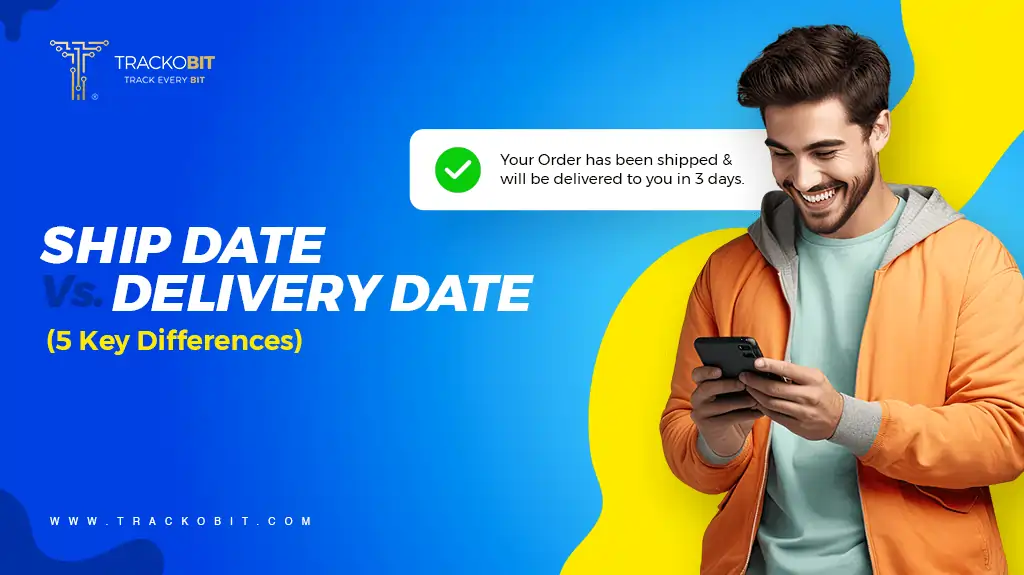
Not knowing the difference between ship date vs delivery date can be confusing. Here are the 5 key differences and the factors influencing ship and delivery dates.
Table of Contents
Toggle
“Your order has been shipped.”
“Your order will be delivered today.”
There is a huge difference between the two messages. One brings a smile to the consumer’s face, and the other brings a sign of relief to the retailer that the order is delivered safely and on time. It is common for consumers to be confused between the ship date and the delivery date. And this is not good for the business as it also might affect consumer expectations.
72 percent of consumers said free shipping was their top reason to shop online.
They might take the shipping date as the delivery date and send out emails and messages for inquiries. To do away with this confusion and miscommunication, let’s see the difference between the ship date vs delivery date.
Let’s solve the mayhem.
What is the Ship Date?
Ship date or shipping date refers to the date when the brand or retailer hands over the shipment to the chosen carrier partner after order processing.
Many reputable brands keep their consumers updated on ship dates for transparency. Many times ship date is also mentioned as the dispatch date or shipping date. It’s the first thing after order confirmation that the consumer receives notification of — after the shipment begins.
For example, if a retailer offers 2-day shipping, the package is expected to leave the warehouse and reach its final destination two days later.
It is worth noting that the shipping date is affected by work on business days and not on weekends. (If a consumer places an order on Friday night, there is a high chance that the order won’t be shipped the next day )
What is the Delivery Date?
Delivery date is when the consumers finally receive their order on their doorsteps. It is also the point at which the entire delivery comes to an end. For example, if a retailer is ordering a 2-day delivery and the consumer places an order on 14th February, the delivery date would be 16th February.
Estimated Delivery Date is a term often related to the delivery date, and it is also the influencing factor behind consumers making the purchase. That is why retailers integrate EDD API on their websites to show their consumers the most accurate delivery date beforehand. It boosts the brand’s credibility and sometimes even triggers impulse buys.
5 Significant Differences Between Ship Date and Delivery Date
-
Calculation
Retailers calculate the ship date based on multiple factors. These include
- Order processing and packaging
- Customers’ delivery date expectations
- And holiday
But the delivery date is determined on the basis of the chosen
- Transportation method
- Transit time
- Geographical location
- Shipping option
Oftentimes, a delivery date is calculated after considering the ship date. For example, if the shipping date is Monday, and the customer is requesting express delivery, then seller wouldhave to deliver the order on Monday itself.
So, it’s valid to say that the shipping date plays a huge role in determining the delivery date. Delayed delivery is also caused by delayed ship dates.
2. Importance
The ship date helps consumers ascertain when they can expect to receive their orders. This not only improves customer satisfaction but also promotes transparency. Additionally, this nurtures healthy communication with the customers by keeping them in the loop from the moment they place an order.
The delivery date provides customers with the accurate day or date when they will finally receive the order. In fact, according to Shopify, almost 45% of customers want to see clearly estimated delivery dates. This determines whether the customer will purchase the product or not.
So, both the ship date and delivery date are important for successful delivery. (it’s the end that matters) But the delivery date is still more vital as it can directly win customers’ buy-ins.
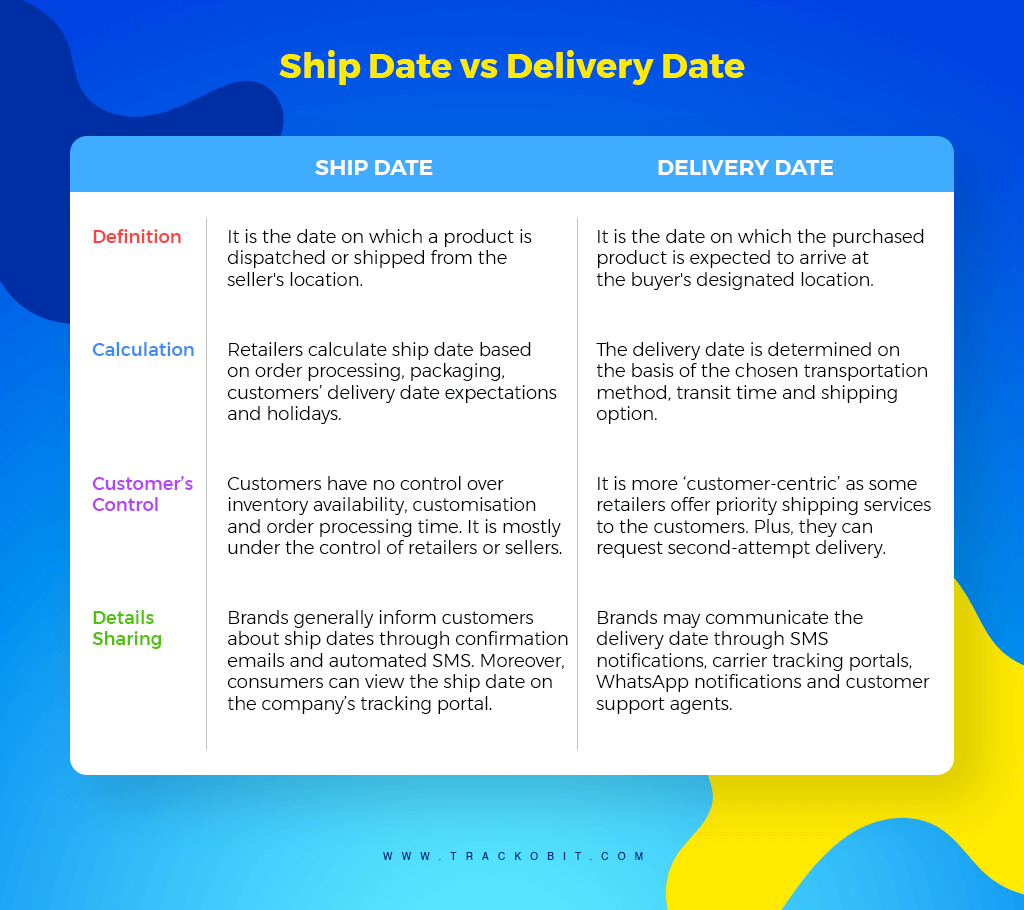
3. Customers’ Control
When it comes to ship date, customers have no control over inventory availability and order processing time. As a result, the ship date might not be flexible enough to meet customers’ requirements. It is mostly under the control of retailers or sellers.
In contrast, the customers have somewhat control over the delivery date. Retailers sometimes offer priority shipping services to the customers. They can choose between express delivery and standard shipping, which gives them more autonomy regarding the delivery date. Plus, if the customer is unavailable on the delivery date, he can change it in the future business days as per their availability. So it’s valid to say that delivery date is more ‘customer-centric’.
4. Communication Channels
Brands generally inform customers about ship date through confirmation emails and automated SMS. Moreover, consumers can view the ship date on the company’s tracking portal.
But on the delivery date side, brands may communicate the delivery date through SMS notifications, order confirmation emails, and carrier tracking portals. Furthermore, you can also notify customers about the delivery date via WhatsApp and customer support agents.
5. International Shipments
In the case of international shipments, only certain processes will hamper the ship date. It can be custom clearance, document verification, or carrier networks. All these things are still under the seller’s purview.
In international shipments, the delivery date can be hard to determine, and even the retailers can’t control it. For instance, international transit time, delays in border crossing, country’s rules and regulations are a few influencing factors. It is common for brands to collaborate with the postal authorities of the delivery country – which can also affect the delivery date.
4 Factors Affecting Shipping Date
Many business owners think that the ship date depends solely on the shipper or retailer. But actually, that is not true. There are several factors directly or indirectly influencing ship date.
1.Inventory Availability
If the order is already in stock, then product dispatch won’t take much time. But if it is out of stock or the customer has required some customization, it would generally take longer to ship. Thus, the ship date might get delayed.
2. Order Processing Time
Order processing primarily consists of various stages- from the moment the customer places an order to ready it for delivery. These include order verification, suitable carrier partner selection, packing, and creating an Airway Bill (AWB) number and shipping label. Amidst the whole process, if any errors occur, rectifying these errors will directly affect the ship date.
3. Order Packaging
Customers prefer custom packaging over standard packaging so they can get safe and undamaged products. However, creating custom packaging takes additional time because brands must prepare packaging material per product durability and brand theme. Custom packaging services for larger shipments can directly impact the ship date.
4. Adverse Weather Conditions
Lastly, adverse weather conditions like heavy rainfall and other extreme weather conditions affect the ship date. If the weather does not get better, the products usually don’t get dispatched to ensure the safety of the product and crew.
4 Factors Affecting Delivery Date
Just like ship date vs delivery dates also get affected by some internal and external factors.
1. Custom Clearance
When dealing with cross-border shipping, customs clearance is the first stage to cross. It involves multiple administrative tasks like document verification, tariff classification, regulatory compliance, etc. Any inaccuracy or hindrance in these activities will lengthen the delivery date.
2. Selected Shipping Process
The shipping process brands choose for your shipments impacts delivery date heads on. It depends on your customers who have selected ground shipping or standard shipping options. Then it will usually take longer than the air freight or expedited shipping service. In fact, if you offer a hyperlocal delivery option, you can even ship the product within just a few hours.
3. Delivery Destination
If the customer’s delivery address is closer to the fulfilment centre, undoubtedly, it will reduce the delivery time. On the other hand, if you need to fulfil international shipping, it will take longer. Also, deliveries to some remote locations like villages or islands will take some extra time.
4. Customer Availability and Carrier Performance
If the customer is not available at the time of delivery, the carrier partner automatically reschedules the delivery for the next business day. This will, in return, delay the delivery date.
Similarly, carrier performance is also a major factor that will impact these days. Some delivery companies specialise in shipping across certain specific areas.
Ship Date vs Delivery Date in the Shipping Timeline
An online order typically follows these steps until it is delivered.
Order Processing: This step involves creating tracking IDs and purchase orders. You also need to update inventory and assign tasks to the packaging and shipping teams.
Order Packaging: Now it’s time to pack up items for shipment. Investing in durable packaging material is a good idea to avoid damage during shipping.
Shipping: Your packages are then shipped out of the warehouse. Depending on your business, you might notify customers that their packages have been shipped.
Delivery: A small item might be handed over to a third-party courier or local postal service to make the delivery.
Returns: If an item you delivered is broken, damaged, or substandard in any way, you’ll most likely have to collect it and send it back to your supplier.
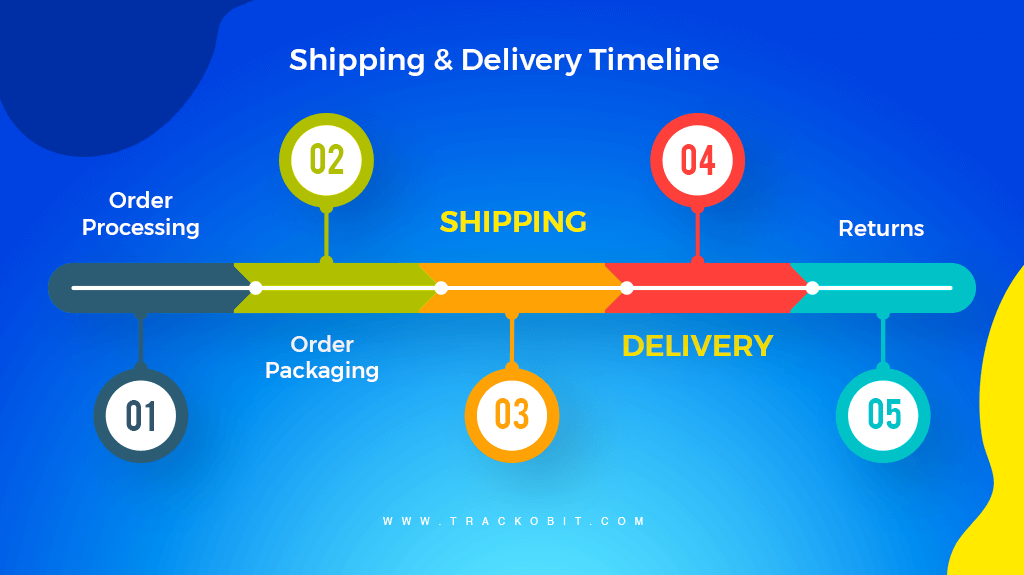
TrackoMile- Simplifying and Optimising Delivery Process
Faster and Cost-efficient Route Optimisation
TrackoMile’s route optimisation solution reduces transit time by assigning the shortest and most cost-efficient route to the riders. Besides formulating the best route combinations, it automates stop sequencing as well.
The solution reduces fuel consumption by ensuring the driver does not stay a minute longer on the road, helping your company save money on gas.
ETAs
Offering the most accurate ETAs to the end consumer is a necessity for last-mile deliveries. Not only does it help prove transparency, but also improves the trust customers have in the brands and retailers. TrackoMile automatically sends the tracking link to the customers, allowing them to track their orders right from shipping to delivery.
PODs
Proof of delivery is of great importance for brands and or e-commerce platforms. It saves you from fraud, keeps you in the loop about delivery completion, and holds the delivery rider accountable. With TrackoMile, riders can take photos, collect OTP and e-signatures, and scan barcodes as PODs through their rider app.
Conclusion
Despite their stark differences, there is some correlation between the ship date vs delivery date. Indeed, any modifications to the ship date may immediately impact the delivery date. For last-mile delivery companies trying to deliver orders on time, adopting TrackoMile is sure to get the job done easily.
Frequently Asked Questions
-
Can a customer change the delivery date?
The majority of brands let consumers select the delivery date that works best for them. After placing the order, the recipient may even be able to change the delivery date with certain carriers.
-
What is estimated delivery time?
Estimated delivery time is the expected time when the shipped order will be delivered to the final destination.
-
Is the ship date the delivery date?
Generally speaking, the answer is no unless it's same-day delivery. The date of shipment indicates when the customer will receive their order. The day the shipped order is delivered to the customer is known as the delivery date.
-
What is the difference between estimated shipment date and the estimated delivery date?
The estimated shipping date is the date the company estimates the ordered products will be shipped. The estimated delivery date is when a customer can reasonably expect the order to arrive.
Tithi Agarwal is an established content marketing specialist with years of experience in Telematics and the SaaS domain. With a strong background in literature and industrial expertise in technical wr... Read More
Related Blogs
-
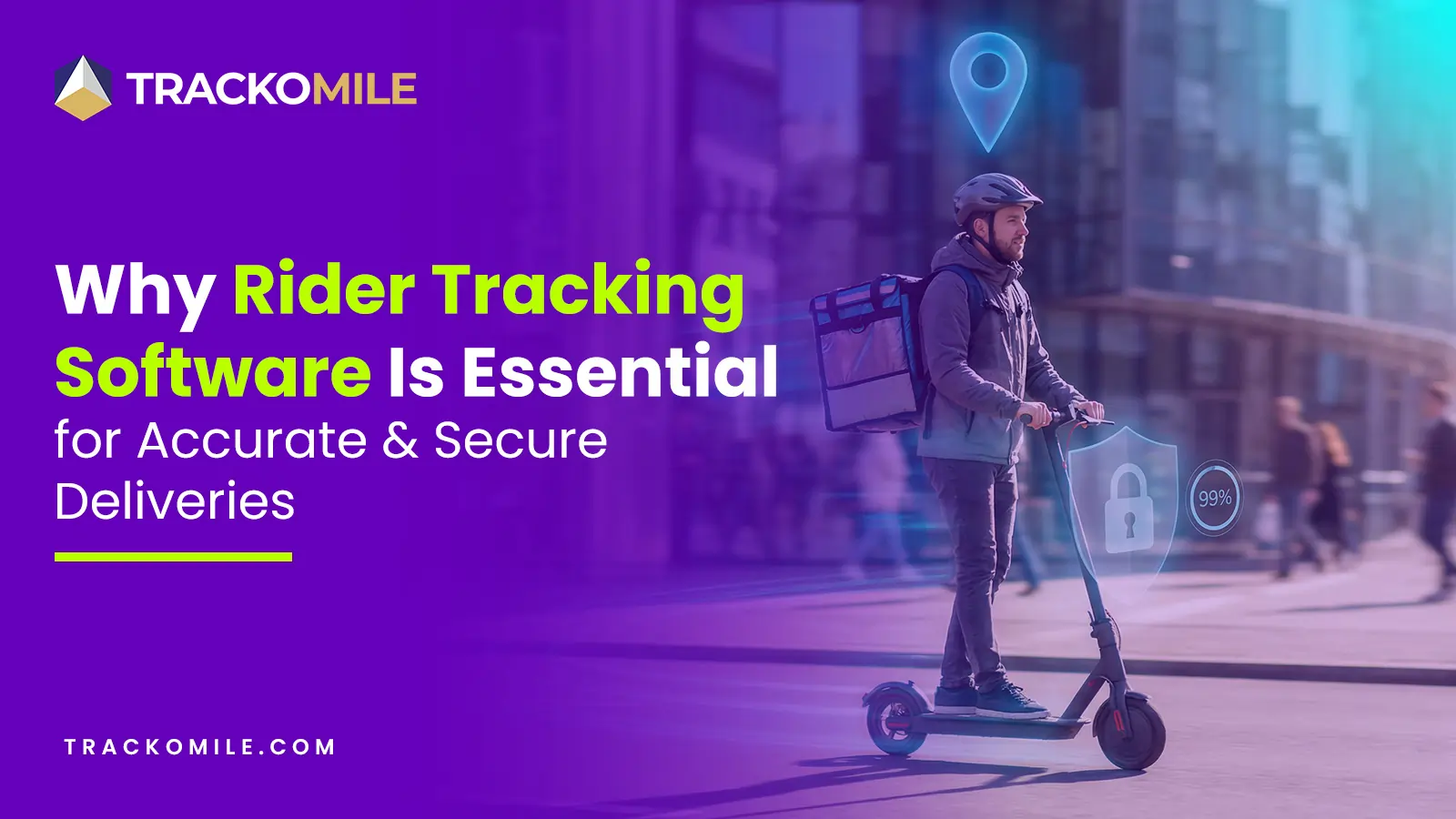
How Rider Tracking Software Improves Delivery Accuracy and Reduces Fraud
Tithi Agarwal December 8, 2025Rider tracking software improves delivery accuracy with real-time GPS visibility and automated ePOD. It also enables route optimisation and fraud…
-
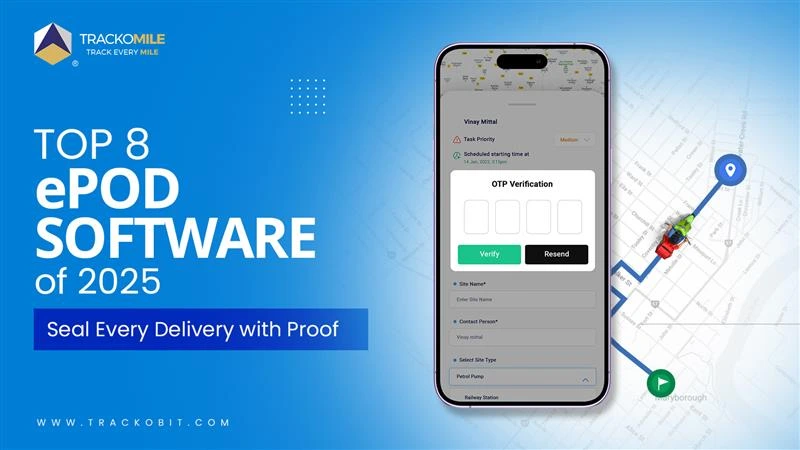
Top Electronic Proof of Delivery (ePOD) Software in 2025
Tithi Agarwal September 25, 2025Electronic proof of delivery has become the backbone of modern logistics. Explore the top 8 ePOD software in 2025 and…
-

3PL vs. 4PL: Which is Best for Your Business?
Tithi Agarwal September 25, 2024Confused about choosing between 3PL and 4PL for your retail supply chain? Read this blog to find out which is…
-

What is Payload Capacity? Payload Capacity Vs. Towing Capacity
Tithi Agarwal September 10, 2024Payload capacity is the total weight a vehicle can safely carry, and it is crucial for safety and compliance. Exceeding…

Subscribe for weekly tips to supercharge your last-mile delivery.
Your inbox awaits a welcome email. Stay tuned for the latest blog updates & expert insights.
"While you're here, dive into some more reads or grab quick bites from our social platforms!"Stay Updated on tech, telematics and mobility. Don't miss out on the latest in the industry.
We use cookies to enhance and personalize your browsing experience. By continuing to use our website, you agree to our Privacy Policy.


































